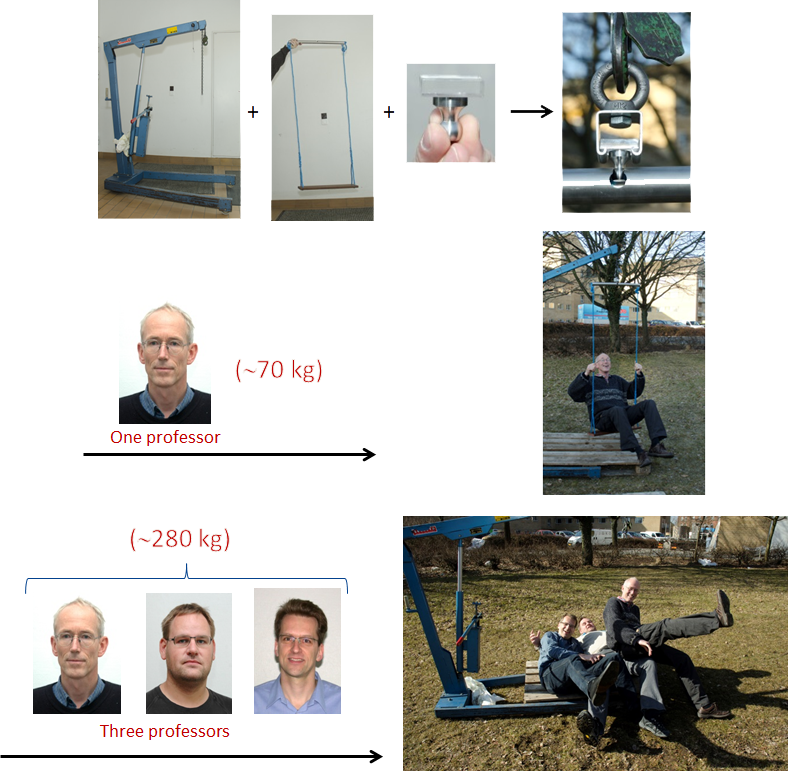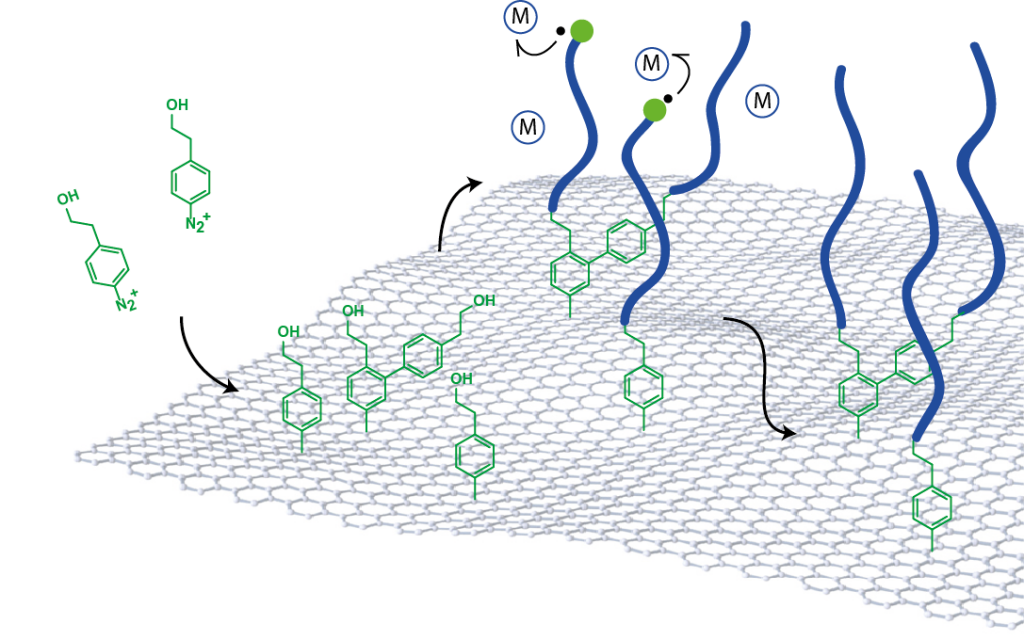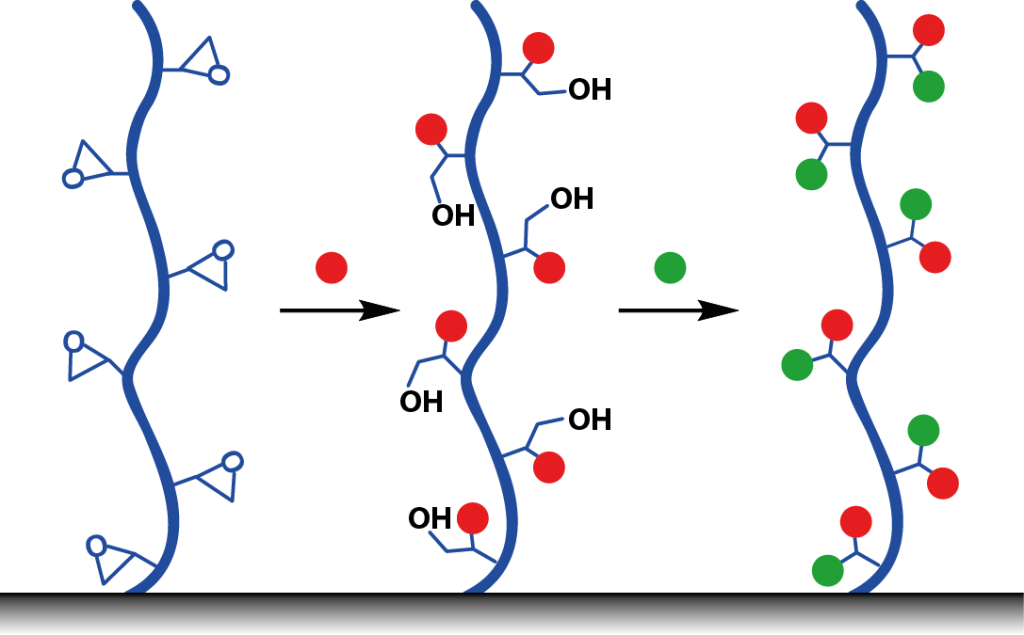Modifying the chemical properties of surfaces with various polymer coatings has been widely studied and applied, and it has a huge impact on our everyday life. Such coatings allow the chemist to tailor the surface properties such as hydrophilicity/hydrophobicity, biocompatibility, adhesion, and friction which are important for several applications.
In the field of polymer coatings, polymer brushes represent a very interesting subclass. Polymer brushes are polymer chains end-tethered to a surface or a particle. The polymer films are made in a highly controllable fashion, where, e.g., the film thickness can be well-tuned from the nanometer to micrometer range. Such features make polymer brushes an attractive candidate for several applications within nanotechnology and interdisciplinary research fields.
Polymer brushes are most often prepared in a grafting from approach, where the polymers are grown from initiators immobilized on the substrate surface. In this manner a high grafting density can be obtained, which forces the polymer chains to adopt an extended or stretched conformation. Furthermore, the properties of the polymer brush can be well-controlled from the choice of the polymer. Such functional versatility combined with brush conformation gives the system unique properties.
Our research in this field has mainly focused on polymer brushes grown from initiator films made by diazonium chemistry, which has three main advantages: 1) A strong covalent bond links the polymer brush to the substrate, 2) several types of substrate materials can be used, and 3) the grafting density can be controlled. On the basis of this concept (Figure 1), we have grown polymer brushes by the surface initiated-atom transfer radical polymerization (SI-ATRP) in various projects as described below.
Polymer Brushes on Graphene
The tethering of polymer brushes to graphene allows us to combine two classes of materials, each with highly interesting and unique properties. The research in our laboratories is focused on controlling and understanding the interfacial chemistry between these two materials, and using this knowledge in the development of novel polymer/graphene hybrid and composite materials.
Multi-Functional Polymer Brushes
The use of polymer brushes in novel functional and smart materials are quickly expanding. To follow the demand for incorporation of new functional groups post-polymerization modifications of the individual repeating units of polymer brushes represent a highly interesting approach. Our research in this field is currently aiming at developing chemoselective, high-yielding post-polymerization modfications, which, e.g., will be applied to incorporate catalysts for the reduction of CO2.
Polymer Brushes as Nano-Glue
Many polymeric coatings on metal devices suffer from poor adhesion, which is a major problem in industrial processes and products. In our research group we are investigating the use of polymer brushes as an adhesive layer in the metal-polymer interface. The advantage of using polymer brushes for this particular application is twofold: 1) the covalent bounds between the metal and the polymer chains, gives the system an importantly high stability, and 2) the type of polymer brush can be tuned to mimic and favorably interact with the polymer coating of interest.
The strength of this concept is illustrated in Figure 4, where a stainless steel test piece has a polymer brush surface film of 50 nm. A few drops of dichloromethane now facilitate the entanglement of the brushes into a Plexiglas brick. This small device is utilized to hold a swing and the stainless steel-Plexiglas interface of only 2 cm2 easily withstand the weight of one professor. However, the weight of three professors sets the limit…

Figure 4: 50 nm polymer brushes on the stainless steel ‘ludo piece’ give a strong sealing able to withstand ~100 kg/cm2
The nano-glue is commercialized through the spin-off company, RadiSurf.
Polymer Brushes on Implants
This research project is aiming at developing a polymeric coating on percutaneous implants. The research is focused on understanding and controlling the interactions in the polymer/cell interface and applying this knowledge to develop implants with better adhesion to the cells. The current state-of-the-art in percutaneous implants suffers from poor sealing between soft tissue and the implant. This has crucial impact for the patients, who suffer from infections in the implant-skin interface. A polymer brush coating with immobilized cell-recognition sites is a promising candidate to overcome the challenge of a proper soft tissue sealing.


